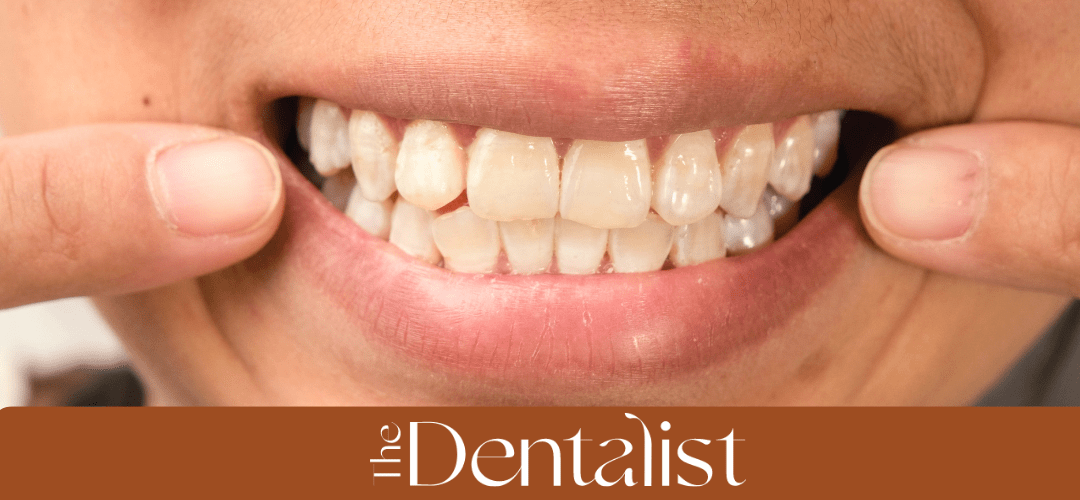Introduction
Dentistry, the art and science of oral health, boasts a vocabulary as diverse as the procedures and tools used in this field.
From familiar terms like “cavity” to more complex ones like “endodontics,” the language of dentistry is rich and intriguing. In this comprehensive guide, we’ll explore the origins and meanings of various dental terms, shedding light on the fascinating world behind those pearly whites.
1. Abrasion – Wear and Tear
Let’s start our dental journey with one of the most common terms: “abrasion”.
Abrasion, the wearing away of tooth structure, finds its roots in the Latin “abradere,” signifying to scrape off.
This term underscores the need to protect teeth from excessive wear.
2. Amalgam – Blending Materials
Amalgam, a dental filling material, originates from the Greek “malagma,” meaning softening.
This term reflects the process of blending various metals to create a durable filling.
3. Anesthesia – Numbing Discomfort
Anesthesia, used to numb sensation during dental procedures, originates from the Greek words “an,” meaning without, and “aisthēsis,” signifying sensation.
This term showcases the crucial role of pain management in dentistry.
4. Bruxism – The Nightly Grinder
Bruxism, the act of grinding or clenching teeth, is derived from the Greek word “brychein,” meaning to gnash the teeth.
This habit can lead to dental issues and underscores the need for protective measures.
5. Caries – Decaying Consequences
Caries, another term for tooth decay, comes from the Latin “caro,” meaning decay or rottenness.
This term serves as a reminder of the importance of regular dental care to prevent cavities.
6. Cavity – Unraveling the Core
A cavity refers to a decayed or damaged area in a tooth. The term originates from the Latin word “cavus,” meaning hollow or hole.
Over time, cavus evolved into “cavity,” succinctly capturing the essence of this dental concern.
7. Dentin – Beneath the Surface
Dentin, the layer beneath enamel, finds its origin in the Latin word “dens,” meaning tooth.
This hard tissue forms the bulk of the tooth’s structure, providing support and protection.
8. Enamel – The Guardian of Teeth
Enamel, the outermost layer of teeth, comes from the Greek word “smaragdos,” signifying a hard substance like precious gemstones.
This sturdy layer shields teeth from daily wear and tear, highlighting the poetic connection between strength and beauty.
9. Endodontics – Delving into Tooth Pulp
Endodontics, a branch of dentistry focusing on the innermost structures of teeth, derives its name from two Greek words: “endo,” meaning inside, and “odont,” signifying tooth.
This speciality involves procedures like root canal therapy, which treats issues within the tooth pulp.
10. Extraction – Removing Dental Dilemmas
Extraction, the process of removing a tooth, has roots in Latin. “Extrahere” means to pull out or draw out.
This term reflects the careful technique dentists use to extract teeth while minimizing discomfort.
11. Fluoride – Fortifying Dental Defense
Fluoride, a mineral essential for preventing tooth decay, has its origins in the Latin word “fluere,” meaning to flow.
This term aptly describes how fluoride flows into the tooth structure, strengthening it against acid attacks and cavities.
12. Gingiva – The Gateway to Dental Health
Gingiva, commonly known as gum tissue, traces its roots to Latin. “Gingivae” is the plural form of “gingiva,” meaning gums.
Healthy gingiva forms a protective barrier around teeth, contributing to overall oral well-being.
13. Gingivitis – Inflamed Gums
Gingivitis, the initial stage of gum disease, derives from the Latin “gingiva,” meaning gums, and “itis,” indicating inflammation.
Understanding this term highlights the importance of preventing gum issues.
14. Halitosis – Unmasking Bad Breath
Halitosis, the clinical term for bad breath, finds its origins in Latin. “Halitus” translates to breath, while the suffix “-osis” indicates a medical condition.
Delving into the origins of this term reveals its significance in identifying and addressing oral hygiene concerns.
15. Impression – Capturing Tooth Details
Impression, the mold of teeth used for creating restorations, comes from the Latin word “imprimere,” meaning to press upon.
Dental impressions are vital for crafting accurate and customized treatments.
16. Malocclusion – When Bites Don't Align
Malocclusion, a misalignment of the upper and lower teeth, comes from the Latin “malus,” meaning bad, and “occlusio,” referring to closure.
This term highlights the importance of proper bite alignment for oral health.
17. Orthodontics – The Art of Alignment
Orthodontics, responsible for achieving properly aligned teeth, originates from the Greek words “ortho,” meaning straight or correct, and “odont,” once again representing tooth.
This discipline emphasizes the importance of a balanced bite and a confident smile.
18. Periodontics – Nurturing Gum Health
Periodontics, centred around the health of supporting structures like gums and bone, is derived from the Greek words “peri,” meaning around, and “odont,” once more referring to teeth.
This discipline underscores the crucial role of gum health in maintaining a strong foundation for teeth.
19. Plaque – The Sticky Culprit
Plaque refers to the sticky, colorless film that accumulates on teeth. The term originates from the Greek word “plakos,” meaning anything flat and broad.
Exploring the origins of plaque reminds us of the importance of regular brushing and flossing to maintain optimal oral hygiene.
20. Prosthodontics – The World of Dental Prosthetics
Prosthodontics involves the design and placement of dental prosthetics, from crowns to dentures.
The term stems from the combination of “prosthetic” and “odont,” highlighting its focus on artificial teeth and oral structures.
Conclusion
In conclusion, the language of dentistry is a captivating tapestry woven from various linguistic sources.
From Latin to Greek, these origins provide insight into the significance of dental terms and their role in oral health. By delving into this glossary of dental terminology, we gain a deeper appreciation for the complexity and artistry that underlie the world of dentistry.
So, the next time you step into a dental practice, you can engage in conversations with your dentist armed with a newfound understanding of the language that keeps your smile shining bright.


